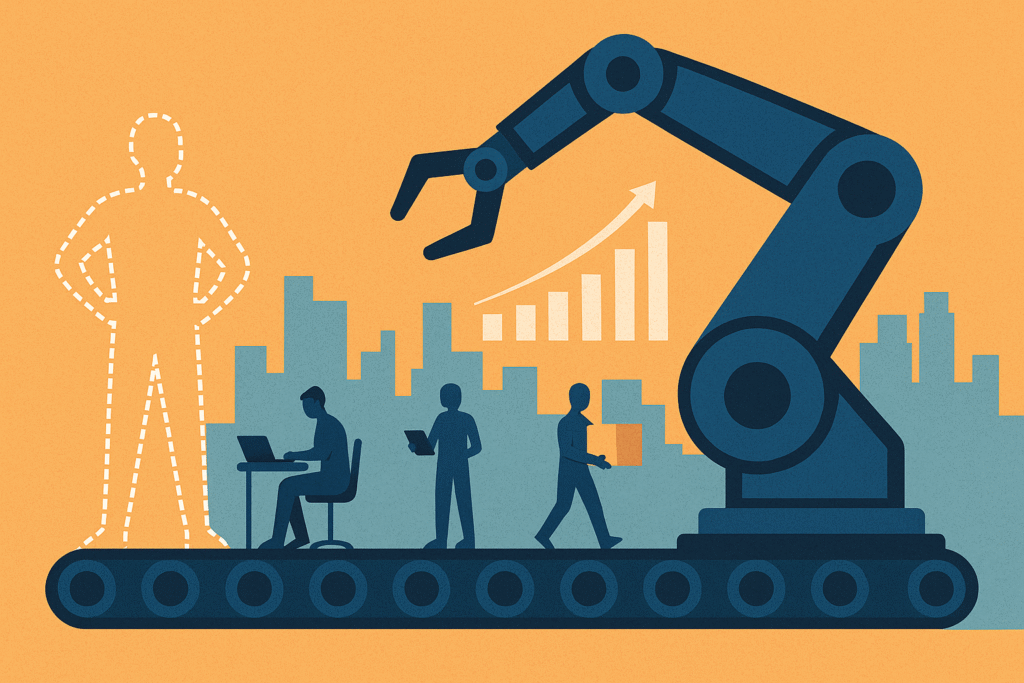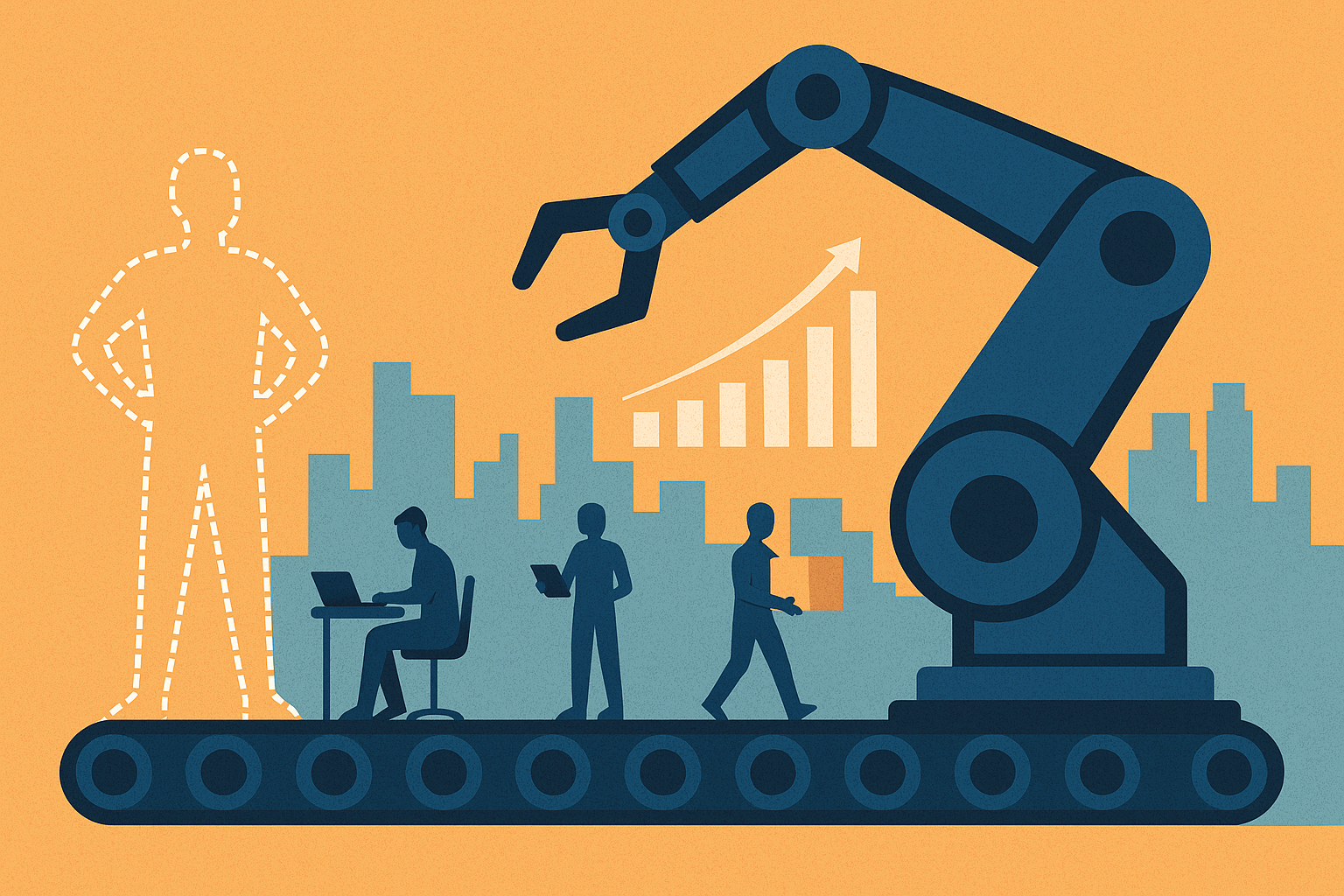Automation is no longer a futuristic concept—it’s today’s reality. From self-checkout machines to AI-driven software, automation is transforming industries and the way people work. While some fear job losses, others see opportunity in this massive shift. Understanding how automation is changing the job market is crucial for anyone who wants to remain competitive, adaptable, and employable in the years to come.
In this guide, we’ll explore the current impact of automation, the sectors most affected, emerging job opportunities, and how to future-proof your career.
What Is Automation?
Automation refers to the use of technology to perform tasks with minimal or no human intervention. It can be:
- Physical automation: Machines and robots used in factories, logistics, and agriculture.
- Software automation: Algorithms and bots used in offices for tasks like data entry, analytics, customer service, and email responses.
- Artificial intelligence (AI): Systems that learn and adapt to make decisions, such as AI chatbots, fraud detection, or medical diagnostics.
Automation improves efficiency, reduces human error, and lowers operational costs—but it also changes the structure of the workforce.
The Rise of Automation: A Global Trend
Automation adoption accelerated significantly during the COVID-19 pandemic, as businesses looked for ways to maintain operations with reduced human interaction. Post-pandemic, many companies continued integrating automated systems to:
- Streamline workflows
- Increase production speed
- Reduce labor costs
- Meet rising customer expectations for speed and convenience
According to a report by McKinsey, up to 30% of current tasks across most jobs could be automated by 2030. That doesn’t mean jobs will disappear entirely—but the nature of work will change dramatically.
Industries Most Affected by Automation
Some industries are feeling the effects of automation more intensely than others. Here’s a look at who’s being impacted and how:
1. Manufacturing
One of the earliest adopters of automation, manufacturing continues to evolve with robots, conveyor systems, and predictive maintenance.
- Impacted jobs: Assembly line workers, machine operators
- New roles: Robotics technicians, automation engineers, maintenance specialists
2. Retail
Self-checkout kiosks and inventory-tracking systems are now common in grocery stores and large retailers.
- Impacted jobs: Cashiers, stock clerks
- New roles: Retail tech managers, data analysts, supply chain specialists
3. Transportation and Logistics
Automation is driving changes in delivery services, trucking, and warehouse operations.
- Impacted jobs: Truck drivers, package handlers
- New roles: Drone operators, fleet data analysts, logistics AI managers
4. Customer Service
AI-powered chatbots, automated phone systems, and knowledge bases are handling more customer inquiries than ever.
- Impacted jobs: Call center agents, helpdesk support
- New roles: AI trainers, chatbot scriptwriters, customer experience analysts
5. Finance
Robo-advisors, fraud detection tools, and automated accounting software are replacing manual financial tasks.
- Impacted jobs: Bookkeepers, data entry clerks
- New roles: Fintech developers, blockchain analysts, compliance automation experts
Automation vs. Job Loss: The Truth
There’s no denying that automation eliminates certain types of jobs. However, it also creates new roles and transforms existing ones. Key trends include:
- Job displacement: Some routine or repetitive tasks will be fully automated.
- Job transformation: Human workers will shift toward more analytical, strategic, and interpersonal responsibilities.
- Job creation: Entirely new roles will emerge to build, manage, and support automated systems.
In fact, the World Economic Forum predicts that automation will displace 85 million jobs by 2025—but create 97 million new ones.
New Jobs Emerging from Automation
As automation grows, the demand for tech-savvy and creative professionals rises. Examples include:
- AI Specialists: Create and train machine learning models.
- Data Analysts: Interpret massive amounts of data for decision-making.
- Cybersecurity Experts: Protect automated systems from breaches.
- Robotics Engineers: Design and maintain mechanical systems.
- Digital Transformation Managers: Guide companies through tech adoption.
Non-technical fields will also benefit. For example:
- Digital marketers using AI tools for targeting and engagement
- Healthcare professionals interpreting AI-generated diagnostics
- Educators creating online and AI-assisted learning content
Skills in Demand in the Automated Era
To remain relevant in the job market, workers need to cultivate a mix of technical and soft skills.
Technical Skills
- Data literacy
- Programming (Python, JavaScript)
- Cloud computing
- Cybersecurity
- AI and machine learning
- Digital tools (CRM systems, automation software)
Soft Skills
- Critical thinking
- Emotional intelligence
- Adaptability
- Collaboration
- Creativity
- Communication
These skills allow workers to complement automation, not compete with it.
The Gig Economy and Automation
Automation is also fueling the growth of the gig economy, where individuals work as freelancers or on-demand contractors.
- Platforms like Uber, Upwork, and Fiverr use automation for matching workers with tasks.
- Freelancers often use AI tools to enhance productivity (e.g., AI writing assistants, design tools).
- Gig workers need to constantly upskill and manage their own branding, marketing, and finances.
While offering flexibility, this trend also raises concerns about income stability, benefits, and worker protections.
How Automation Impacts Different Demographics
Young Professionals
- More open to technology and online learning
- Must balance career-building with staying updated on trends
Mid-Career Workers
- Risk of skill obsolescence if not reskilled
- Opportunity to lead transformation efforts with experience
Older Workers
- More challenges adapting to new systems
- Need accessible training and support
Governments and companies must invest in inclusive training programs to ensure no group is left behind.
Strategies to Adapt and Thrive
Adapting to the automated job market doesn’t mean becoming a coder overnight. Instead, take a proactive approach:
- Audit your skills: Identify gaps and strengths.
- Learn continuously: Use platforms like Coursera, LinkedIn Learning, and YouTube.
- Stay informed: Follow industry trends, automation news, and job market forecasts.
- Embrace tech: Use tools that enhance your work, not replace it.
- Build a personal brand: Highlight your ability to work with automation and add human value.
- Network: Connect with others in your industry to learn and grow.
Role of Governments and Businesses
To ensure automation benefits everyone, public and private sectors must:
- Offer reskilling and upskilling programs
- Support STEM education and digital literacy
- Provide career transition services
- Promote ethically guided automation practices
- Create policies that balance innovation with job security
The future workforce must be agile, tech-aware, and human-centered.
Final Thoughts: Embrace the Shift
Automation isn’t coming—it’s already here. While it will reshape the job market, it doesn’t spell doom. Instead, it signals a new era of innovation, collaboration, and potential.
By focusing on learning, adaptability, and human value, you can not only survive this transformation—but thrive in it.








